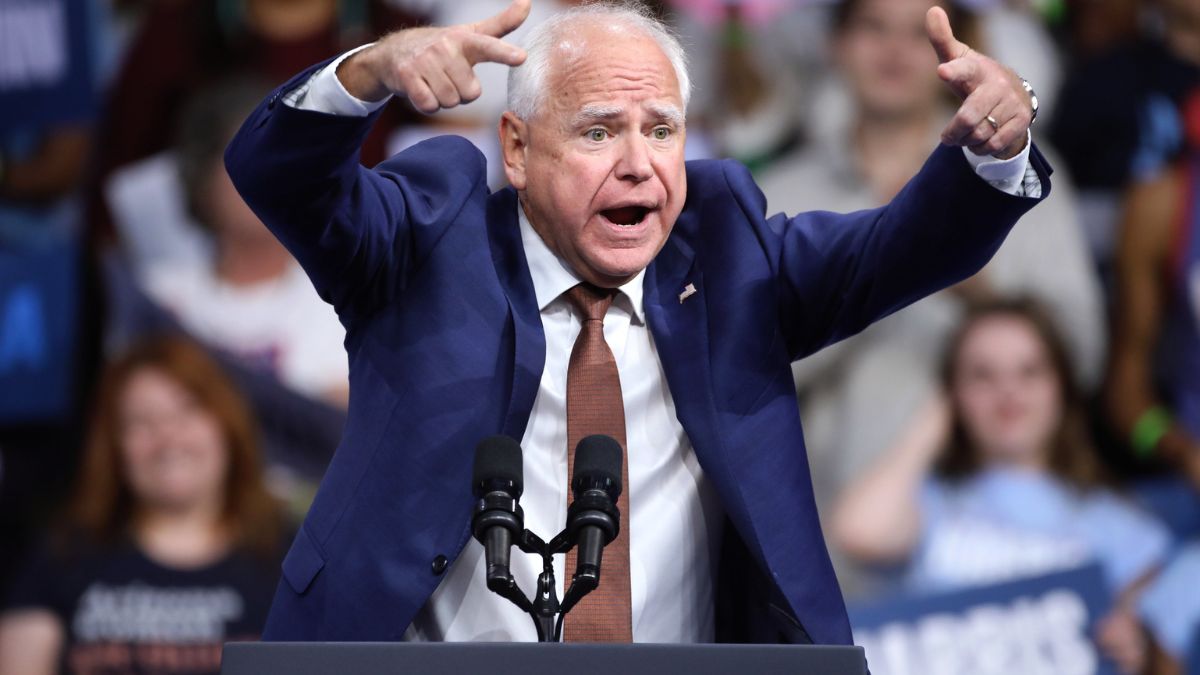
This article was originally published on FrontPage Mag. You can read the original article HERE

[Order Daniel Greenfield’s new book, Domestic Enemies: HERE.]
When I headed out to UCLA, the campus was quiet. A few students wandered in and out of buildings. A proud mother was taking pictures of her daughter. Students sunbathed on the lawn underneath Royce Hall, the center of the pro-terrorist riots days earlier, which had been secured by an LAPD and campus police presence. Apart from one smear of graffiti on a vending machine and a PLO flag hanging in the window of a dormitory, there was no sign of the riots.
What happened to the rioters? Some may have been sleeping it off, but most weren’t there.
When the NYPD broke up pro-Hamas riots at Columbia and City College, half of the rioters turned out not to be students. While the media has portrayed the terrorist encampments on campuses as the work of outraged students, it’s not clear how many anywhere are students.
The masks commonly worn by the supporters deliberately obscure their identities. But this did not help them when they were finally arrested. What it did do was initially shield the fact that many of the terrorist supporters were clearly older adults, not students, as these photos show.
A bearded 59-year-old man is clearly not a student, but put on a mask, drape a keffiyah around him, and keep him in the background, and he can pass as just another warm “student” body.
While the terror supporters have been careful to send students and faculty, especially sympathetic ones, unmasked in front of the cameras, the mugshots show what they’re hiding.
The truth is that few students support the antisemitic encampments and most want them to go.
Those are the results of a recent survey by Generation Lab which found that only 7% of students took part in them, only a quarter support them and a majority oppose them.
A majority of college students want to see fewer protests, oppose BDS, and don’t agree with most anti-Israel slogans. 34% of college students blame Hamas leaders for the situation in Gaza, as opposed to 19% who blame Netanyahu.
And, more importantly, 81% say that “students who destroyed property, vandalized or illegally occupied buildings should be held accountable”.
What the survey really shows though is that the majority of students don’t really care. When college students were asked to pick the issues they cared about the most, only 13% picked the war. The majority selected issues like free college, racial justice and social justice.
Of all the issues, the Hamas war was the least important one on the list to most students.
The pro-Hamas campus riots did not happen because of widespread support from college students, but because key campuses like Columbia and UCLA had become hubs for anti-Israel groups due to the presence of pro-terrorist faculty and some Muslim and Marxist students.
By setting up terrorist encampments on college campuses, terrorist supporters exploited the cowardice and ineptitude of the administrators who had allowed them to operate on campus all along while manufacturing the narrative that they were a student movement. And as a student movement, they could lay claim to the mantle of the Vietnam War protest movement.
But are they actually a student movement rather than a movement recruiting students?
The campus encampments deployed their own security to keep out not only Jewish students, but the press. Participating students were told not to speak to anyone without approval and when they did, the results were often embarrassing as it became clear that they knew nothing. In one famous video from NYU, a protesting student couldn’t explain why she was protesting.
When the Wall Street Journal’s Peggy Noonan visited Columbia University, she observed that unlike past student protesters, “these demonstrators would generally not speak or make eye contact with members of the press”. When she tried to talk to any of the younger members, none would reply except for one who said that she couldn’t talk because “I’m not trained.”
People who already know what they stand for don’t need to be “trained”.
The terrorist encampments were not just set up on campuses to keep Jews out, but to keep students in. Adjuncts held classes inside them to get more students inside the pen. And then used social pressure to try to convince them to stay. Tents and snacks were brought in to make the makeshift terror compounds seem like a comfortable camping adventure.
And masks were worn to make it hard to tell apart the students from the outside activists.
The compounds were not a form of protest, but of control. They did not arise organically from the student body, but were brought in from the outside. After a police crackdown, like the one at UCLA, there was little sign of any interest in the cause by the random students on campus.
And that is the difference between an actual student movement and a “Hello Fellow Kids” one.
Universities allowed Islamic terror states like Qatar and Saudi Arabia to trade money for control. And when foreign students and terror faculty promoted support for terrorism on campus, they turned a blind eye. And students all too often allowed extremists to take over student government and speak in their name. All of that made colleges a perfect target for the riots.
Now after the vandalism and violence, a lot of college students are unhappy with the consequences as graduations have been canceled and classes were replaced with virtual online learning. A fake student movement executed in their name doesn’t have their support.
And it never did.
This article was originally published by FrontPage Mag. We only curate news from sources that align with the core values of our intended conservative audience. If you like the news you read here we encourage you to utilize the original sources for even more great news and opinions you can trust!










Comments